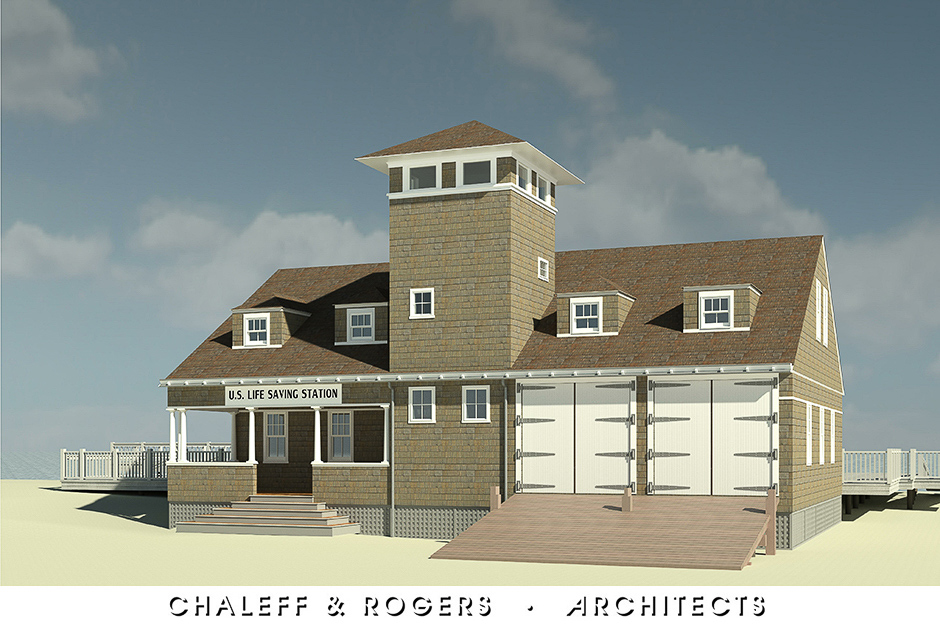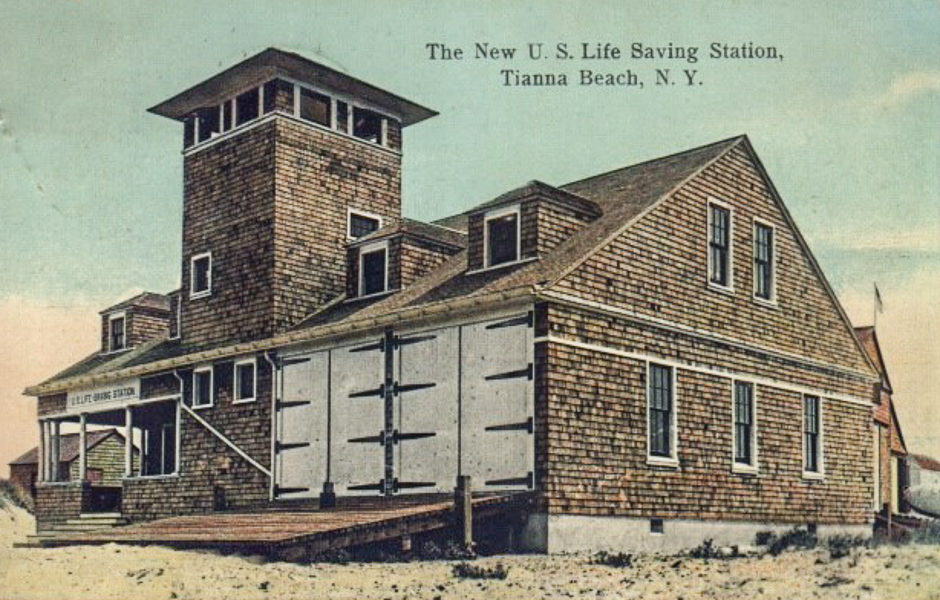
Tiana Station was built in 1871 at a position “two miles southwest of Shinnecock light.” In 1912 the station was rebuilt to replace decayed and antiquated buildings. The station was rendered inactive on June 9, 1937 and reactivated for service during World War II and was manned by an African-American crew and commanded by an African-American Chief Petty Officer, CBM Cecil R. Foster. The final position is given as “on Tiana Beach, abreast of Shinnecock Bay, and three and one-quarter miles west-southwest of Shinnecock Light.” The station and grounds were abandoned in 1946. — U.S. Coast Guard History. Archival postcard.
~~~~~~~~~~~~~~~~~~~~~~~~~~~~~~~-
In 1878, the U.S. Life-Saving Service was established. Life-saving stations were manned by a crew commanded by the station “Keeper.” The qualifications for being appointed Keeper included having boating experience, being a reliable and physically capable person between 21 and 45 years of age, and having sufficient education to run station business. The size of the crew serving at a USLSS station depended on how many oarsmen were required to operate the station’s largest rescue boat. This amounted to six men at most Atlantic coast stations where 6-oared surfboats were standard equipment. Most USLSS lifesaving stations were manned seasonally. This was because the frequency of shipwreck occurrences in a region tended to vary at different times of the year. Stations along the Atlantic and Gulf Coasts were generally fully-manned from September 1 until May 1. By late 1889, the USLSS operated 227 lifesaving stations. There were 39 stations on Long Island in New York, and 40 stations along the New Jersey coast.
Most USLSS stations included an integral watch deck or watch tower, and some had separate lookout towers. From these, crew members kept a visual watch over the waters offshore of their station during the day. They rotated on lookout duty, which included keeping track of passing ships and watching for signs of a vessel in distress. Lookout watches were normally divided into four-hour cycles, with two men on duty each watch. Crew members also patrolled the area’s shoreline at night and during storms. Men on shoreline patrol carried beach lanterns and several Coston lights (hand-held signal flares). If a wreck was discovered, a flare was ignited to signal those on the distressed vessel that they had been spotted and to alert the remaining crew at the lifesaving station.
A typical USLSS station building included a boat room to accommodate one or two boats and lifesaving equipment, a kitchen, a dining area (mess), a bedroom for the keeper, a bunk room for the crew, a spare room to accommodate visitors, and storage areas including space for storm clothes (boots, coats, etc.). The crew’s living quarters were simple and utilitarian, reflecting the seasonal character of their work. The station keeper remained on duty year-round and occupied quarters that were generally more comfortable, though it was usually just a private room.
Over time, the USLSS performed admirably in accomplishing its mission to save lives and property. Its achievements have been preserved in detailed narratives and statistics as a result of the stringent record-keeping requirements that recorded the service’s many successes.
USLSS crews had to work long hours in harsh weather amid demanding situations with little or no respite or food. Many rescue attempts put members of the U.S. Life-Saving Service at risk and over the years many lost their lives. The professionalization of the lifesaving crews and regular drilling allowed them to work in a disciplined and effective manner under the worst conditions, ultimately minimizing the loss of life among both rescuers and those they sought to save. The dedication of USLSS surfmen and lifeboat crews may be summed up by their service’s informal motto, “You have to go out, but you don’t have to come back.”
In 1913, the Treasury Department requested that the USRCS (US Revenue Cutter Service) and USLSS be merged and remain within that department. A governmental reorganization in 1915, during the administration of President Woodrow Wilson, established the U.S. Coast Guard (USCG). As a result of the merger that established the U.S. Coast Guard, all of the 279 active USLSS stations were renamed Coast Guard stations and USLSS personnel positions were converted to USCG officer and enlisted ranks. District superintendents became USCG commissioned officers, station keepers became warrant officers, and lifesaving station surfmen and boat crews became enlisted men. All these persons became subject to military discipline as well as being eligible for the federal government’s retirement system.
The Coast Guard’s lifesaving branch was allowed to keep the previous USLSS organizational structure. Its personnel continued to operate the same boat stations and to use the same lifeboats, surfboats, and lifesaving equipment. The principal mission remained the accomplishing of rescues and maritime salvage in near shore waters and the promotion of maritime safety.
The Coast Guard maintained 240 lifeboat stations in 1934. Each was manned by a crew of eight to ten enlisted men under the command of a USCG petty officer. Even though the total number of stations was less than earlier, they were more efficient. This was due to better lifeboats that were self-bailing and practically unsinkable, as well as improved communications technology such as ship-to-shore radio for reporting emergencies. The surfmen of these stations continued to be trained in the use of lifesaving equipment that had been mainstays of the USLSS prior to 1915, including breeches buoys, and used them to accomplish rescues.
The Coast Guard’s lifeboat stations were ideally suited for performing coastal security functions. The Coast Guard Beach Patrol was established to provide an around-the-clock watch over U.S. coastlines to prevent German submarines from landing enemy agents to sabotage industrial plants and conduct espionage. In June 1942 on Long Island in New York, a Coast Guard surfman patrolling the beach near the East Amagansett USCG Station accosted a suspicious group of men at the shoreline. Unarmed and outnumbered, he was able to extricate himself from danger and report the incident. A subsequent search of the area found a hidden boat and a cache of supplies buried by German agents. The Federal Bureau of Investigation (FBI) subsequently apprehended this group of infiltrators, as well as other German agents landed in Florida.
Following World War II, administration of the Coast Guard reverted again to the U.S. Treasury Department’s civilian control and the number of personnel was reduced. The USCG had by then adopted war time advancements in maritime technology that provided for better communications and navigation. The widespread use of radar and growth of the electronic LORAN (long range navigation) system were important improvements. Better weather forecasting also contributed to maritime safety, as did changes in vessel technology such as the replacement of commercial sailing vessels by engine-powered watercraft less susceptible to weather-related accidents.
During the post-World War II period, USCG lifeboat stations continued to perform maritime search and rescue, vessel inspection and licensing, nautical communications watch, coastal patrol, and weather reporting. A number of new stations were built from 1945 to 1950, while other USLSS legacy stations were decommissioned and disposed as excess property. Even so, by 1950 many former USLSS stations continued to serve as USCG facilities. A number of these legacy stations continue to be operated by the Coast Guard today.
Maritime lifesaving in the United States is characterized by various aspects that contribute to the achievement of successful rescues. Perhaps the most important one is the character of the lifesavers themselves. Through time, persons engaged in American lifesaving have tended to be distinguished by dedication to duty, courage, resourcefulness, and determination. While manifestations of these qualities vary from one individual to another, the nature and circumstances of lifesaving tends to select persons who internalize and exercise each of them.
Another important aspect of lifesaving is the equipment available for accomplishing a rescue. In the United States, this has been distinguished by a series of major improvements through time. Both the U.S. Life-Saving Service and its successor, the U.S. Coast Guard, developed on-going programs to seek out, develop, and adopt advancements in lifesaving technology. The USLSS institutionalized its efforts to foster technological innovation by creating the Board on Life-Saving Appliances, and also sought continuing improvements in lifesaver training and rescue protocol. The boats used for lifesaving have been a major part of these technological improvements. So have other equipment items relating to removing persons from a distressed vessel and bringing them safely ashore.
Surfboats were the smallest and lightest class of rescue boats used in the United States. They were more widely used by the USLSS than the larger lifeboats. The surfboat design was originally developed by fishermen along the Atlantic coast. These boats were typically from 25 to 27 feet long with a 7-foot beam and a flat bottom, and weighted from 700 to 1,000 pounds. Surfboats had wooden hulls made with white oak framing and white cedar strakes. There were sealed air chambers in the bow and stern for buoyancy. Surfboats were manned by six oarsmen and a steersman who was positioned in the stern to control a steering oar that was approximately 18 to 20 feet long. These boats could accommodate up to 12 additional rescued persons. The cost of a surfboat in 1889 was approximately $275.
The architects who designed U.S. government lifesaving stations made a notable contribution to the history of American architecture. Their work resulted in the construction of facilities that supported the saving of thousands of lives. The structures they developed contributed to establishing the remarkable traditions of selfless dedication and courage for engaging in rescue that is fundamental to the present-day Coast Guard’s identify and organizational ethos.
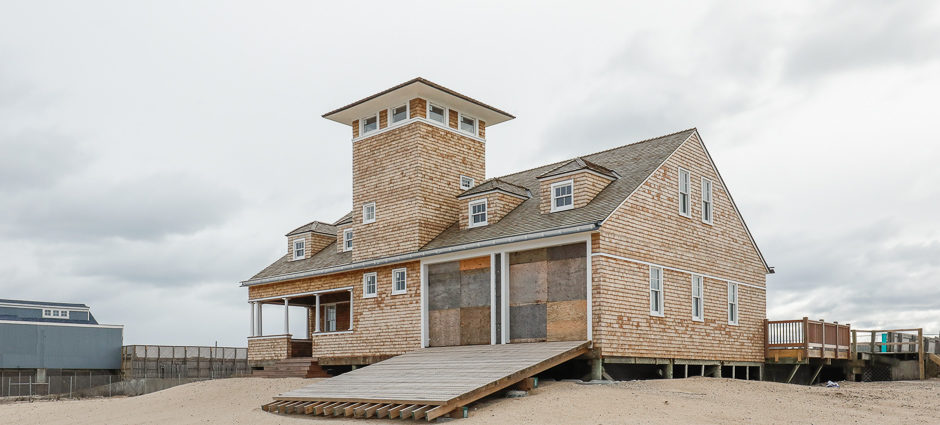
Tiana Life Saving Station, 70 Dune Road, Hampton Bays. Restoration photos by Jeff Heatley, January, 2019.
1910 Lorain Design: Victor Mindeleff’s 1910 Lorain Design again combined elements of the Shingle and Colonial Revival Styles and was used for lifesaving stations built in Ohio, Michigan, New York, and Virginia. This station design provides for a shingle-clad building with a rectangular plan, side gable roof, hipped dormers, and a square, three story watch tower centered on the front facade. The tower is flanked by a recessed porch in the dwelling section and a boat storage section with two lifeboat bays. The roof includes three hipped roof dormers on the front and five on the rear. The roof on the gable ends is flush with the side elevations.
— National Register of Historic Places / courtesy of National Park Service.
———————————-

First Floor, Tiana Life Saving Station
———————————-
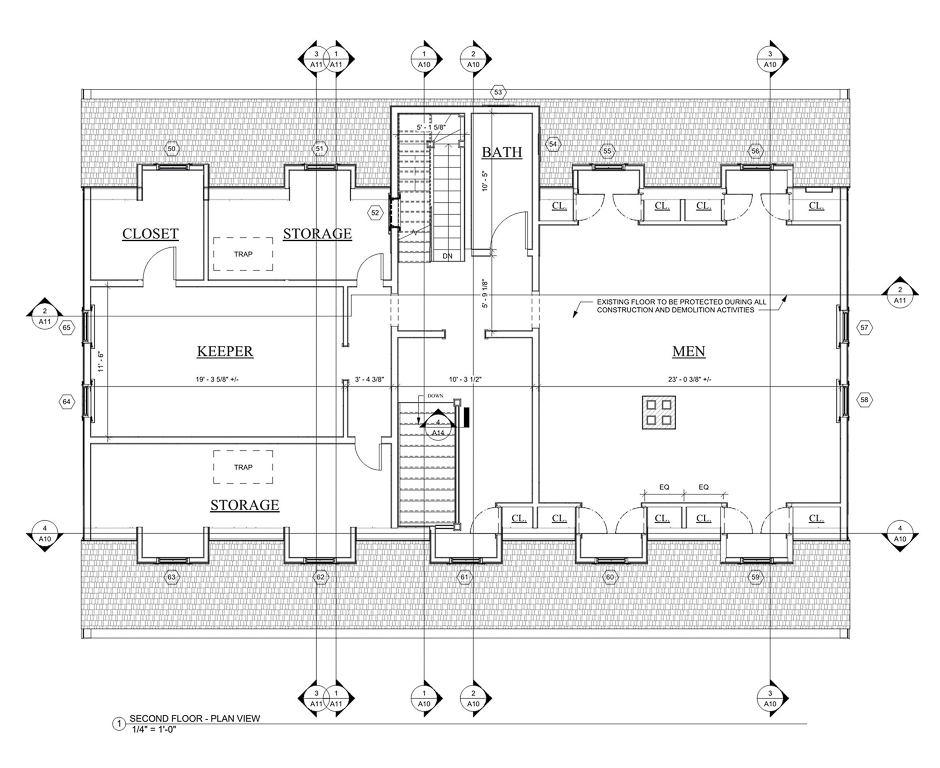
Second Floor, Tiana Life Saving Station
———————————-

Tower Floor & Roof, Tiana Life Saving Station
———————————-
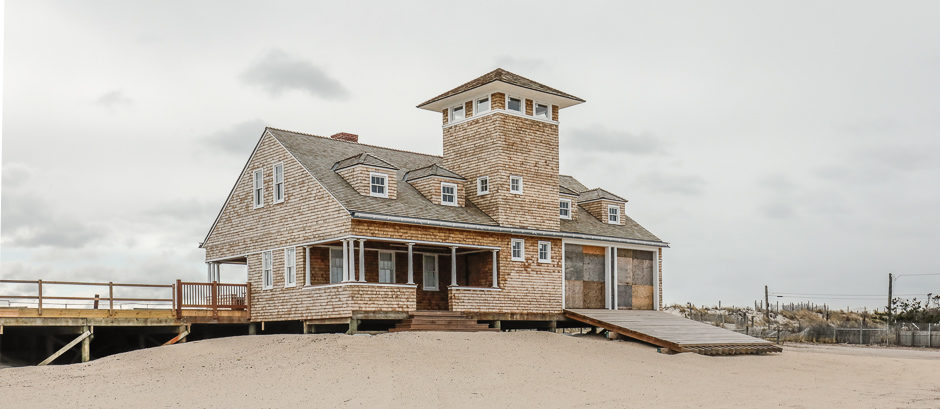
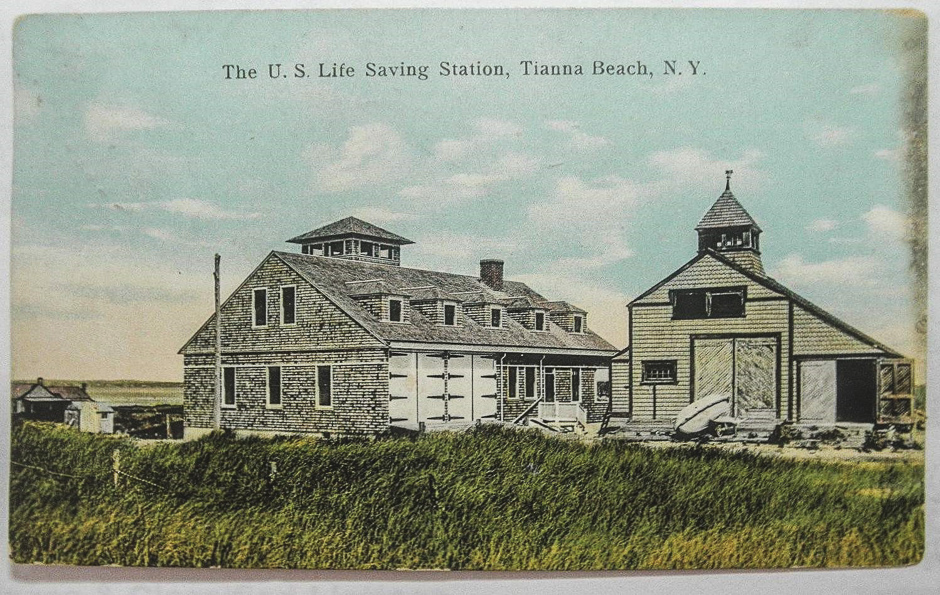
Archival postcard.

~~~~~~~~~~~~~~~~~~~~~~~~~~~~~
———- December 23, 2019 ———-
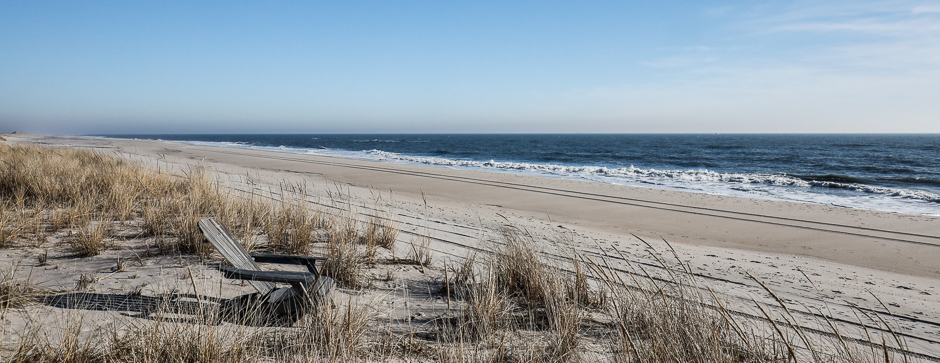
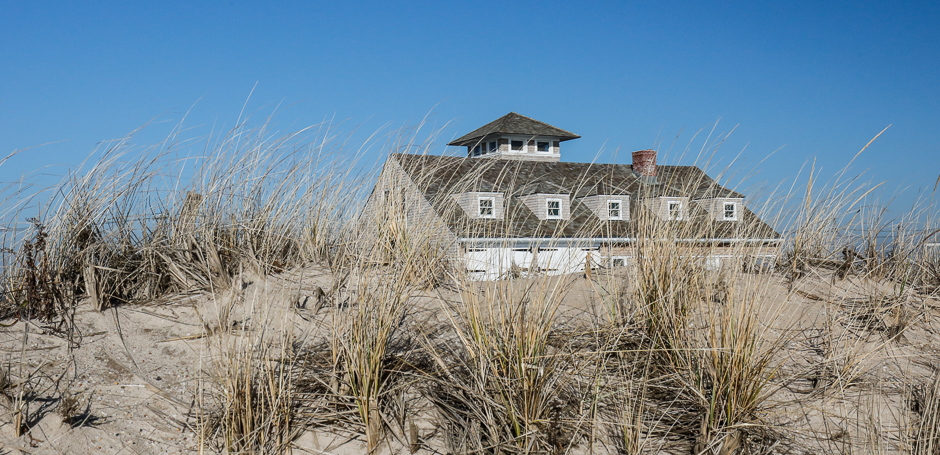

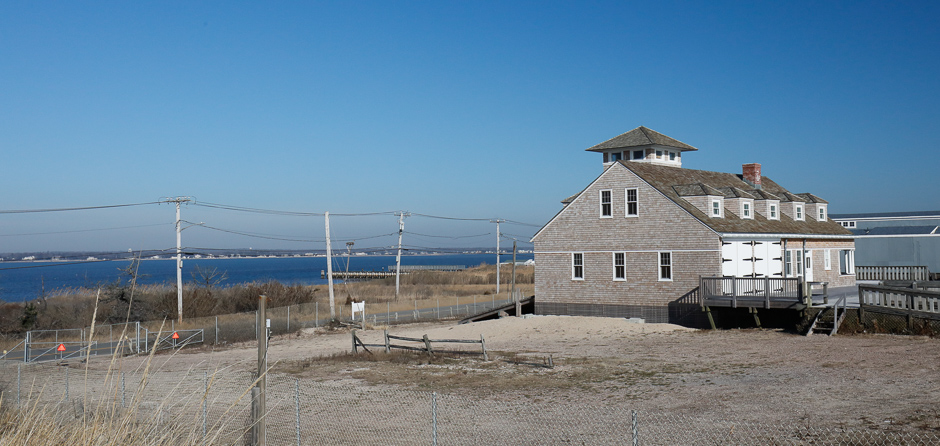
——————————————————–
Architectural Services: Chaleff & Rogers Architects, P.C.
Contractor for exterior rehab: Woodstock Construction Group Ltd.
Engineering Services: David Rhoades, T.F. Engineering.
—————–
See also: Amagansett Life Saving Station, 1902 / Restoration
Amagansett Life-Saving Station / Historic Structure Report by Robert Hefner
~~~~~~~~~~~~~~~~~~~~~~~~~~~~~~~~~~~~~~~~~~~
www.chaleffandrogers.com
____________________________________________________________________
————

